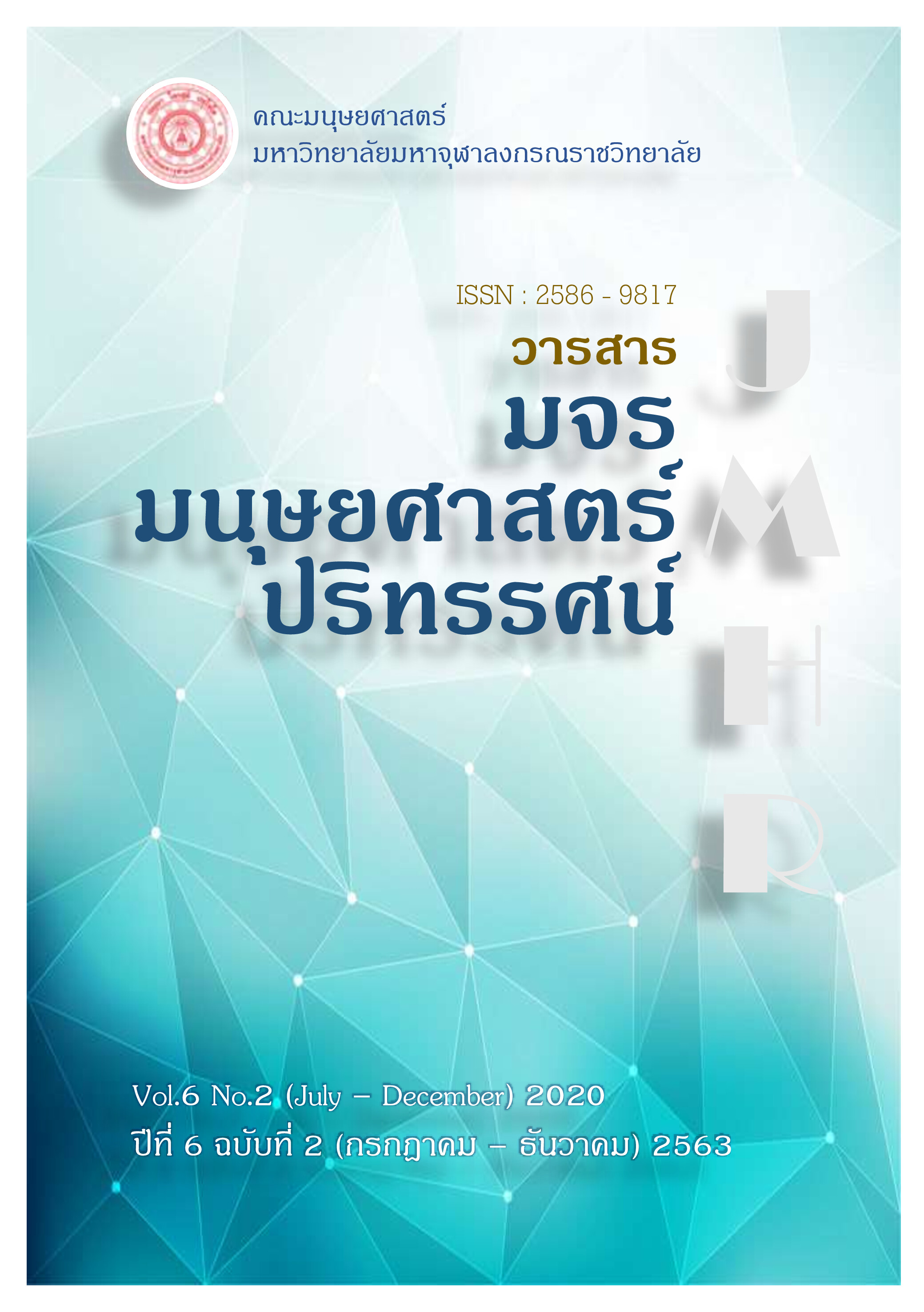A Study of English Listening Skill from Social Media of B.A. Students, Faculty of Humanities at Mahachulalongkornrajavidyalaya University, Nongkhai Campus, Thailand
คำสำคัญ:
English Listening Skill, Social Mediaบทคัดย่อ
The objectives of research were: (1) to study English listening skill from social media of B.A. Students, Faculty of Humanities at MCU Nongkhai Campus. (2) to analyze English listening skill from social media of B.A. Students, Faculty of Humanities at MCU Nongkhai Campus.
The study was a mixed-method between a qualitative and quantitative research. A questionnaire was used for collecting qualitative data from 47 students and in-depth interview was used qualitative data collection from 5 key informants.
The result of finding which are students’ English listening improvement and difficulties of English listening. As regard to the result of students listening improvement the first moderate average was the “Frequency of using English listening from social media”. The statistical figures Mean was equal to 25.81 and standard deviation (S.D.) was equal to 2.11. Second moderate average was “To understand English listening for comprehension and pronunciation”. The statistical figures Mean was equal to 28.51 and standard deviation (S.D.) was equal to 2.37. Third moderate average was the “Outcomes of bring Social media Improving of Listening in English through Authentic Materials”. The statistical figures Mean was equal to 25.38 and standard deviation (S.D.) was equal 2.43. In short, as regard to the difficulty of English listening students have many difficulties such as expressing their ideas in English, hesitating to speak others, poor vocabulary, inconvenient communication with native speakers, feeling shy to speak and afraid of speaking in front of the public and so forth.
The result from the analysis of English listening skill from social media were the respondents tried to understand every listened word, following by students realized to the most important words, students tried to learn with different accents, students understood the difference between the different voices and the last item was the students were realized of listening stamina.
เอกสารอ้างอิง
Chark. H. H. &Chark E. V, (1977). Psychology and language. New York: Harcourt Brace Iovanovich.
Jerold W. (1990). Apps, Study skills for today’s College Student. New York: McGraw-Hill Publishing Company.
Porges, Stephen W. (2011). The Polyvagal Theory: Neurophysiological Foundations of Emotions Attachment Communication, and Self-regulation. New York: W. W. Norton & Company.
Michael Rost, (1991). Listening in Action, Activity for Developing Listening in Language Teaching. Great Britain: Prentice Hall International Ltd.
Mendelshn, D. (1999). Learning to listen: A strategy base approach for the second language learner. San Diego, California: Dominie.






